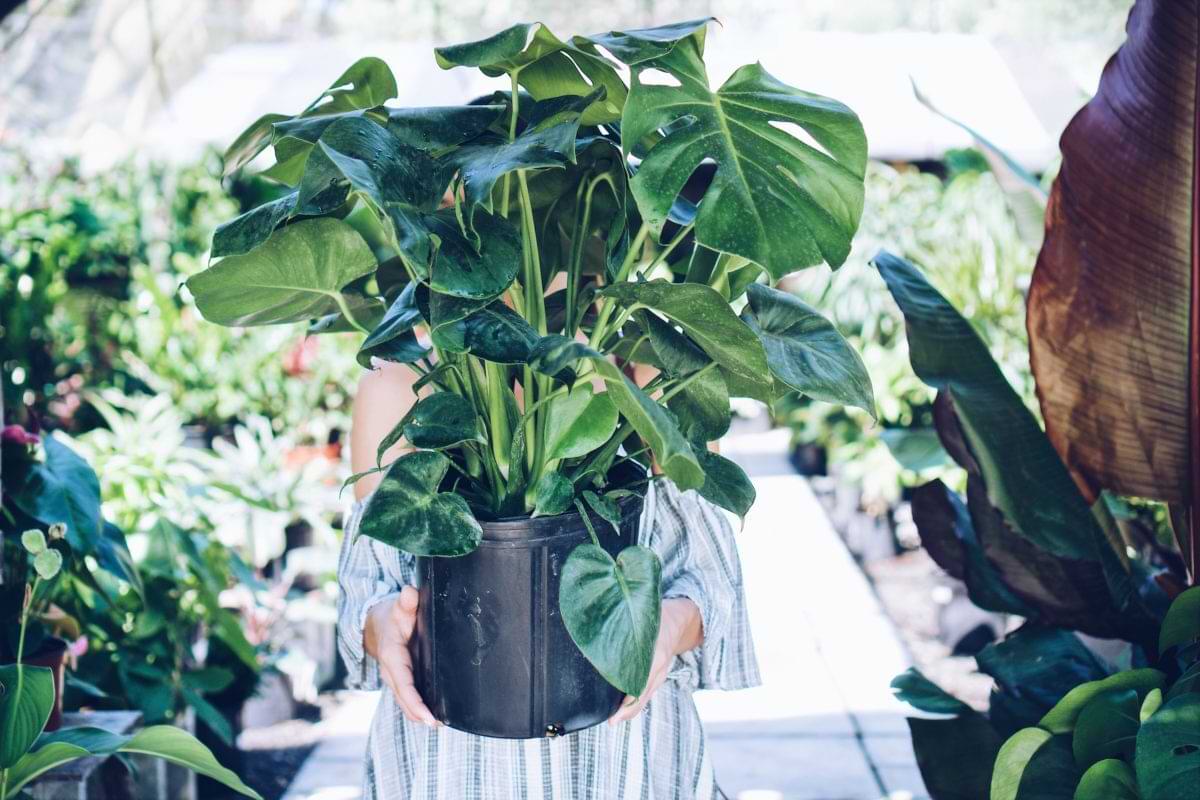Monsteras need the right nutrients to grow strong stems, healthy root structures, and those beautiful leaves we all love. But it’s possible to overfertilize your montera, which can lead to health problems! Let’s talk about overfertilization in monsteras, how to treat it, and how to prevent it.
How to Diagnose Overfertilization in Monsteras
Overfertilization is harmful because an imbalance of nutrients can stunt a monstera’s growth, damage the foliage, and even cause chemical burns on the roots.
Sometimes it’s hard to tell if your monstera is overfertilized because many of the symptoms can also have other causes. But often the best way to determine the cause of a plant’s health problem is to watch for combinations of signs and consider your care routine.
If you’ve been giving your plant fertilizer and wonder if your plant is getting too much (or the wrong balance), consider the following:
Yellowing leaves. One sign of overfertilization is yellowing leaves, especially the lower leaves. This can also be caused by overwatering or underwatering or a lack of light, so watch for these other signs as well.
Dark-brown spots on the end of the leaves. Brown spots can indicate damaged roots or lack of water absorption, which is also a symptom of overfertilization.
White crust on your monstera’s soil. This can indicate a buildup of minerals that the plant isn’t absorbing.
Blackened roots. If you happen to unpot your plant and notice browned, blackened, or limp roots that don’t smell rotten, this could indicate chemical burns from an excess or imbalance of nutrients.
How to Reverse Overfertilization in Monsteras
The best way to treat overfertilization in monsteras (or any houseplant) is to leach the soil, or flush as much fertilizer out as possible.
Start by removing any white crust from the top of the soil as possible with a spoon or trowel. Then put your monstera in a tub, shower, sink, or outside and slowly add water to the soil. Let the pot drain, and then water it again. Repeat this 3 or 4 times to flush as many excess minerals from the soil as possible. Then leave your monstera to completely drain for a few hours.
As long as your monstera’s pot has sufficient drainage, this will not cause overwatering.
Another way to remove excess fertilizer from your monstera’s roots is to completely change your monstera’s soil and rinse the roots. This could cause root shock and prompt your monstera to droop for a week or two, but it’s also very effective in reversing overfertilization.
To do this, unpot your monstera and gently massage the root ball to break up the soil. Remove as much of the soil as possible and then use room temperature water to rinse the rest of the soil off the roots.
Then repot your monstera in fresh soil and water generously.
Whether you leach or change out the soil, don’t fertilize your monstera for at least a month to give the roots a chance to heal.
After a month, start fertilizing your monstera with an appropriate fertilizer, on the right schedule.
How to Prevent Overfertilization in Monsteras
The best way to prevent overfertilization is to use a properly diluted liquid fertilizer on the correct schedule. While some houseplant owners like pellet fertilizer, we find that it’s hard to control how much fertilizer your plant is actually getting. It’s also hard to remember a fertilization schedule, no matter what kind of fertilizer you use!
That’s why we created Monstera Plant Food. This liquid fertilizer is specifically formulated to provide monsteras with the right balance of nutrients, and it’s gentle enough that you can use it with each watering, no special schedule required!
Buy your Monstera Plant Food on Amazon. Your monstera will love it, and overfertilization will be a thing of the past!





